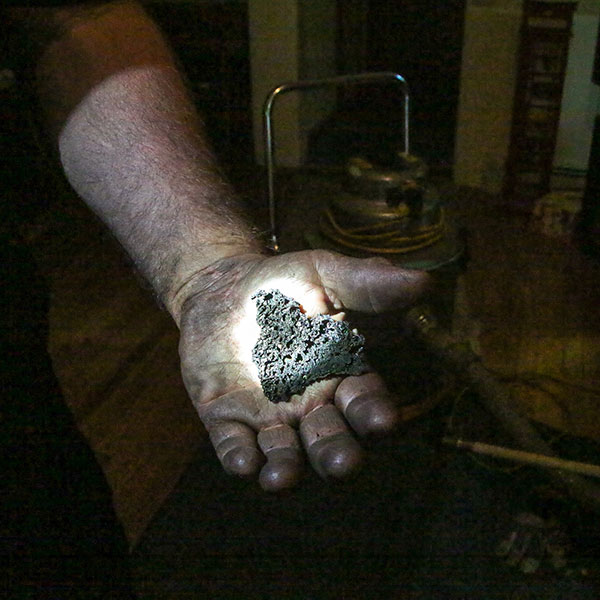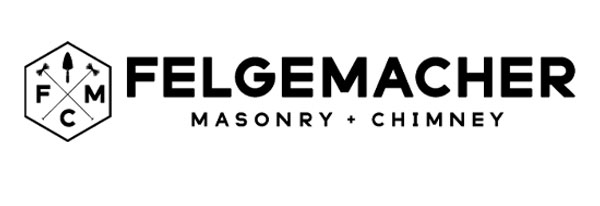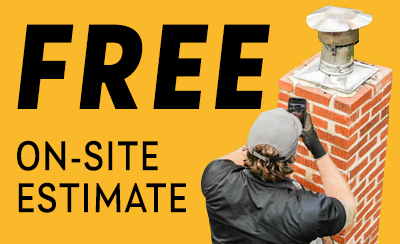Should I Be Worried About Creosote Build-Up?
What Is Creosote?
Wood is placed in the firebox and smoke and other by-products of combustion make their way up through the chimney flue and out of the chimney. The by-products of burned wood are of course unburned wood particles, gases, water vapor, tar fog, and various other chemicals. As the smoke rises it cools and condensation takes place. The materials that were not burned become a sticky, tar-like residue that sticks to the walls of your chimney, that is creosote. Read on to learn more about creosote and how our certified chimney sweep services can help.
 What Causes Buildup?
What Causes Buildup?
There are three main causes of creosote buildup
- Incomplete Combustion – Certain types of wood do not burn completely such as unseasoned wood or wood that is damp. The smoke carries the unburnt particles up the chimney flue and this material is a major component of creosote. Softwoods like fir, pine, and cedar make more smoke which creates more creosote.
- Restricted Air Flow – Chimneys themselves restrict airflow which can cause incomplete combustion, this produces creosote which restricts the airflow even more and a cycle of creosote buildup occurs.
- Lack of maintenance and cleaning – Some homeowners are unaware of the regular maintenance that chimneys require. Procrastination is fertile ground that allows creosote to build up more and more over time.
Is Creosote Dangerous?
Creosote contains toxic chemicals that can be responsible for the following…
- Damage to the Respiratory System – As mentioned above, creosote contains toxic chemicals that are harmful if inhaled and are known to cause damage to the lungs.
- Cancer-Causing Chemicals – Creosote doesn’t just restrict airflow through a chimney, the chemical byproducts are also carcinogens.
- Skin Irritation and Rashes – Creosote can also cause serious burns to the eyes, rashes, and other forms of skin irritation.
- House Fires – Creosote is highly flammable, so if ignited by flames it can cause raging fires
What can you do about creosote?
- The first thing is to realize that creosote is a natural outcome of burning wood. People who do not want to worry about this issue at all may choose a gas fireplace. Gas fireplaces run on gas and do not burn wood, so they don’t have the problem of incomplete combustion. They are a “cleaner” option that typically requires less maintenance than wood-burning fireplaces.
- If you do have a wood-burning fireplace, there are steps you can take to minimize creosote buildup. Choose hardwoods such as hickory or ash that burn more completely and avoid unseasoned, damp, or softwood that will produce more smoke and therefore more creosote.
- Schedule regular cleaning for your chimney. This will greatly reduce the amount of creosote buildup in your chimney. There are 3 stages of creosote buildup, with 3 being the most severe. A chimney inspection will reveal what stage of buildup has occurred. At stage 1 the creosote can be removed with a simple chimney brush, at stage 2, the creosote is hard and sticky and must be removed with a special tool. At stage 3 the creosote resembles tar and is thicker and more flammable. Most professionals will probably recommend the removal of the flue liner.
 The bottom line is that creosote build-up is very dangerous and should be taken care of immediately. The good news is that the experts at Felgemacher Masonry + Chimney are here to help you with any questions you may have so help is only a phone call away.
The bottom line is that creosote build-up is very dangerous and should be taken care of immediately. The good news is that the experts at Felgemacher Masonry + Chimney are here to help you with any questions you may have so help is only a phone call away.
Call Felgemacher Masonry + Chimney
716-482-1820
Contact us online here





